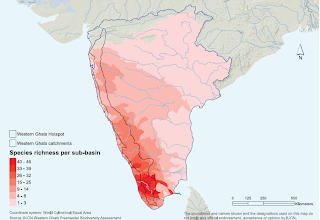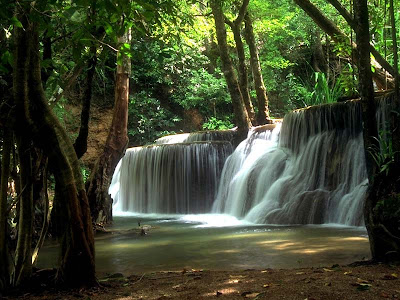Department of National Parks, Wildlife and Plant Conservation reported Khao Yai National Park was the country’s top park attracting over 750,000 visits during the last fiscal year.
However, visits to Khao Yai dropped 8.33% to 754,927 when compared with 823,552 visits during the same period in 2010. Of that, 680,717 were Thais and 74,210 were foreigners.
The park covers 2,165.55 sq km in a mountain range, 200 km northeast of Bangkok. It lies largely in Nakhon Ratchasima, but also includes parts of Saraburi, Prachinburi and Nakhon Nayok.
The second most popular national park was Nam Tok Phlio National Park in Chanthaburi province which attracted 503,046 visits increasing 1.42% from 496,023. It attracted 462,626 Thais and 40,420 international visitors.
Nam Tok Chet Sao Noi National Park in Pak Chong in Nakhon Ratchasima and Saraburi provinces was third with 472,309 visits, decreasing 27.32% from 649,806 visits during the same period in 2010. However, the park attracted only Thai visitors.
Doi Inthanon National Park in Chiang Mai improved its visits by 7.04% to 437,914 compared to 409,106 in the previous year. It attracted 384,855 Thais and 53,059 foreigners.
Erawan National Park in Kanchanaburi ranked fifth and attracted 381,296 visits, down 8.63% from 417,289 visits. Of that, 232,906 were Thais and 148,390 were international visitors.
The next top five national parks in 2011 were: Mu Ko Chang National Park in Trat (337,648; +4.49%); Khao Laem Ya-Mu Ko Samet National Park in Rayong (317,405; +22.54%); Huai Nam Dang National Park in Chiang Mai (292,144; -7.22%); Doi Suthep-Pui National Park in Chiang Mai (252,260; -7.29%); and Tat Ton National Park in Chaiyaphum (221,735; -31.34%).
In 2011, 148 national parks across the country registered 9,494,807 visits decreasing 9.42% from 10,482,283 visits in 2010. Of that, 8,306,851 were Thais (-12.23% from 9,464,738) and 1,187,956 were foreigners (+16.75% from 1,017,489).
At present (effective from 1 December 2007), Thais pay Bt40 at the listed national parks except for Mu Ko Surin and Mu Ko Similan which costs Bt80.
Foreigners pay Bt200 except for Mu Ko Surin, Mu Ko Similan, Pha Hom Pok, Inthanon, Thung Salaeng Luang, Phu Kradung, Khao Yai, Lanta and Hat Noppharatthara-Mu Ko Phi Phi that charge Bt400 per entry.
However, the department will raise entrance fees, 1 October, by 150% at 29 national parks out of 148 locations, nationwide.
The new fees have been imposed at top-ranked national parks including Khao Yai, Inthanon, Erawan, Doi Suthep-Pui, Huai Nam Dang, Mu Ko Surin and Mu Ko Similan. Fees will be Bt100 for a Thai (Bt50, for a child)






















